on display.
LGBTQ+ Art Exhibits and Shows
Have a call for LGBTQ+ artists you’d like us to include?
Submit it through the form at the bottom of the page.
WHAT TO SEE
LGBTQ+ Art Exhibitions
The First Homosexuals
Wrightwood 659
(CHICAGO) — UNTIL JULY 26
The Holly Johnson Story
National Museums Liverpool
(LIVERPOOL) — UNTIL JULY 27
Young Birds from Strange Mountains: Queer Arts from Southeast Asia and its Diaspora
Schwules Museum
(BERLIN) — UNTIL AUG. 4
Kent Monkman: History is Painted by the Victors
Denver Art Museum
(Denver) — APR. 20 - AUG. 17
Ramsay Art Prize 2025
— Jack Ball
ART GALLERY OF SOUTH AUSTRALIA
(Adelaide) — MAY 31 - AUG. 31
Wolfgang Tillmans: Nothing prepared us — Everything prepared us
The Centre Pompidou
(France) — JUNE 13 - SEP. 22
Jeffrey Gibson: the space in which to place me
The Broad
(LOS ANGELES) — JUNE 13 - SEP. 22
Gustave Caillebotte: Painting His World
ART INSTITUTE OF CHICAGO
(CHICAGO) — JUNE 29 - OCT. 5
Superfine: Tailoring Black Style
The Metropolitan Museum of Art
(NEW YORK CITY) — MAY 5 - OCT. 26
City in a Garden: Queer Art and Activism in Chicago
Museum of Contemporary Art
(CHICAGO) — JUNE 5 - MAY 31, 2026
The First Homosexuals
This epic exhibition is a masterwork of art and history
It’s shocking — and a bit disappointing — that many major museums declined to open this groundbreaking exhibition of LGBTQ+ art.
But their loss is Wrightwood 659’s gain.
The Chicago-area museum opened this monumental exhibit in May, and if you haven’t made the pilgrimage yet, you have until July 26th to catch this major show.
“Monumental” isn’t really an exaggeration. The exhibit — privately funded by the Alphawood Foundation, and curated by art historian Jonathan D. Katz and associate curator Johnny Willis — features more than 300 works by more than 125 artists from 40 countries.
“It is the kind of exhibition that a massive institution like the Met regularly pulls off,” Katz told WBEZ Chicago. “But for a small, fairly new institution like Wrightwood 659 to pull off, is kind of extraordinary.”
Though other museums declined to host the show — officially titled, “The First Homosexuals: The Birth of a New Identity, 1896-1939” — many agreed to lend works, including the Metropolitan Museum of Art in New York; The Musee d’Orsay in Paris; The Smithsonian American Art Museum in Washington, D.C.; and several other major institutions around the world.
As the gallery’s media alert states: “Because images were capable of representing nuances for which there were literally no language, this innovative exhibition is able to describe one of the great ironies of the moment: While language was constricted to only two options — hetero- or homosexuality — art picked up the slack and came to represent an enormous range of identities, sexualities, and genders.”
There was also a large research effort behind this ambitious collection. A team of 22 scholars took part and were able to trace the invention of the word “homosexual” to a 1868 letter from a Hungarian writer to the sexology pioneer Karl Heinrich Ulrichs.
“Before the coinage of the word ‘homosexual,’ same-sex desire marked something you did, not necessarily who you were,” historian Katz says. “‘The First Homosexuals’ examines how, after this watershed moment, for the first time, homosexuals were cleaved from the rest of the population and given an identity, which turned on their sexuality.”
The exhibition is split into eight sections, beginning with “Before the Binary,” which shows how same-sex and different-sex desires were not always seen in opposition before the late 1800s.
The other sections include: “Portraits,” “Relationships,” “Changing Bodies, Changing Definitions,” “History,” “Colonialism and Resistance,” “Performing,” and “Beyond the Binary.”
Some of the artists include Berenice Abbott, Thomas Anshutz, Léon Bakst, George Bellows, Giovanni Boldini, Rosa Bonheur, Claude Cahun, Jean Cocteau, Honoré Daumier, F. Holland Day, Beauford Delaney, Charles Demuth, Duncan Grant, Marsden Hartley, Florence Henri, Harriet Hosmer, Katsushika Hokusai, Frederic Leighton, Lumière Brothers, Gustave Moreau, Glyn Philpot, John Singer Sargent, Egon Schiele, Pavel Tchelitchew, and Henri de Toulouse-Laurec.
Artists whose work is lesser-known in the United States are also on display. These include: Jacques-Émile Blanche (France), Benjamín de la Calle (Colombia), Florence Carlyle (Canada), María Izquierdo (Mexico), Van Leo (Armenia/Egypt), Manuel Rodríguez Lozano (Mexico), Ladislav Mednyánszky (Slovakia/Hungary), Roberto Montenegro (Mexico), Gabriel Morcillo (Spain), Ismael Nery (Brazil), Daniel Stepanov (Russia), Lionel Wendt (Sri Lanka), Emilio Baz Viaud (Mexico), Florence Wyle (Canada), and Kristian Zahrtmann (Denmark).
Opening an LGBTQ+ exhibition?
If you have a Queer art show coming up, we want to know!
We try to compile as many LGBTQ+ exhibitions and shows as we can so we can connect emerging Queer artists with communities all around the world. But we can’t capture them all on our own. If you have an exhibition you’d like us to include in our roundup, fill out the form!

